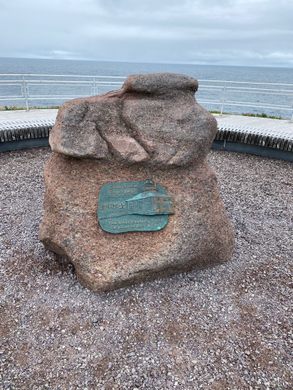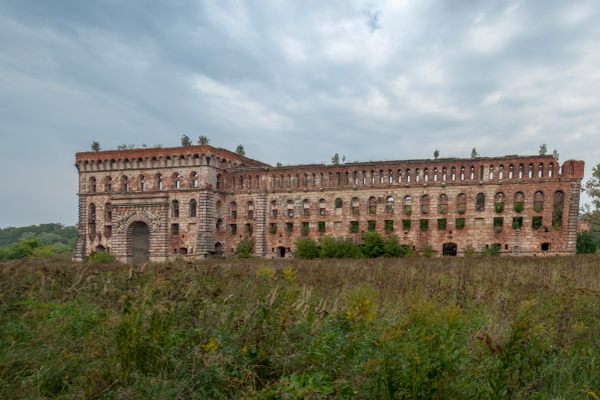Cape Spear Battery
A World War II gun battery sits at the easternmost point of North America.
In 1941, two all-but-obsolete American 10-inch breech loading M1888 guns were installed at the new Cape Spear Battery on the easternmost tip of Canada. The goal: to defend the entrance to St. John’s harbor and help protect World War II convoys between North America and Europe.
Cape Spear is famous for two things: being the easternmost point in Canada (and North America, although some might argue with that) and for its lighthouse, which has been in operation since 1836. Less famous is Cape Spear Battery, located just to the northeast of the historic lighthouse.
In May 1941, the United States agreed to give Newfoundland two 10-inch breech loading M1888 guns as part of the Second World War Lend-Lease Act. This was a full seven months before the U.S. entered the war. The guns were destined for the new battery being built at Cape Spear. The guns and their M1894M1 disappearing carriages arrived in November, 1941, but had to sit idle for months, because the ammunition didn’t arrive until February of 1942.
By this time, the threat from German capital ships in the North Atlantic was almost zero. Instead, submarines and smaller, faster surface raiders posed the greatest danger to Allied shipping. Unfortunately, the two M1888s weren’t suited for this kind of target. Both were lumbering, slow-firing things that had originally been installed at Battery Harker at Fort Mott, New Jersey, back in the 1890s. Nevertheless, the guns did have a range of about 7,000 yards, which would at least give enemy vessels something to think about from a significant distance.
The guns needed a large number of men to service and operate them, a job given to the 103rd Coast Battery “A” troop, part of the Royal Canadian Artillery. The battery, therefore, was built with barracks and bunkers to house and support the troops stationed there. Underground rooms were also constructed for ammunition storage, with additional administration buildings, mess halls, and shelters for the Canadian forces (American forces were also at Cape Spear to operate anti-aircraft search lights and a SCR-271 radar station).
When the war ended, the battery was decommissioned and all but stripped. The two guns, however, were left behind. Today, the historic battery is open to the public, who can explore some of the concrete bunkers, the gun emplacements, trenches, a searchlight platform, and, of course, the two 30-tonne guns.
Know Before You Go
In September 2016, the federal government declared that the site was in dire need of repairs, stating that the battery was "nearing the end of its lifecycle and the bunkers have been severely deteriorated, to the point that certain sections of them have been closed to public access for safety reasons." Expect some sections to be closed off, at least until the restoration project is completed. Tours can be scheduled in advance with soldiers from the Royal Canadian Artillery.






























Follow us on Twitter to get the latest on the world's hidden wonders.
Like us on Facebook to get the latest on the world's hidden wonders.
Follow us on Twitter Like us on Facebook